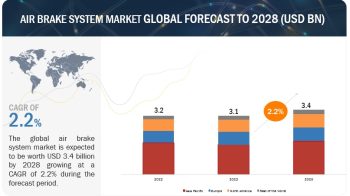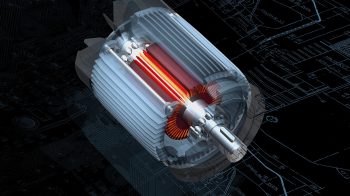Exponentially growing vehicle production and sales around the globe, increasing glass applications in passenger cars, growing popularity of SUV, and the trend of laminated side glazing to improve safety are identified as the key drivers for the automotive glass industry. The Automotive Glass Market is projected to grow at a CAGR of 4.80% during the forecast period, to reach a market size of USD 23.59 Billion by 2025 from USD 16.21 Billion in 2017.
The automotive glass market is also influenced by government regulations for vehicle safety, advancements in smart glass technologies that help optimize the cabin temperature and increase fuel efficiency.
The demand for smart glass technologies is growing as they help in reducing heating and cooling load on the AC unit of the vehicle and optimize natural light. Auto dimmable property of smart glass has attracted the automotive industry to smart glass. Dynamic adjustment of transparency is one of the features of smart glass that offer the driver safety and clear view during the night. The market for Electrochromic glass and Suspended Particle Device (SPD) glass are expected to see a surge in demand during the forecast period as the technologies are expected to become more economical in the near future owing to technological advancements and growing awareness among end-users.
Download PDF Brochure @ https://www.marketsandmarkets.com/pdfdownloadNew.asp?id=229009655
The automotive glass market in Asia Oceania is estimated to grow at the highest CAGR, in terms of value, from 2017 to 2025. The automotive industry in Asia Oceania has emerged as a hub for automotive production in recent times due to the changing consumer preferences, increasing per capita income, and cost advantages for OEMs. The region is well known for small and cost-effective passenger cars. However, compact SUVs have gained popularity in emerging countries. These vehicles require more volume of glass per vehicle, thus increasing the demand for glass. Due to low production cost, easy availability of economical labor, lenient emission & safety norms, government initiatives for FDI, the region has witnessed higher growth, which has, in turn, propelled the growth of the automotive glass market.
Suspended Particle Device (SPD) technology is the fastest-growing segment in the automotive smart glass market, in terms of value, from 2017 to 2025. This growth can be attributed to the increasing demand for comfort and safety. SPD-based smart glass maintains the amount of light and heat entering the vehicle through windows. It helps in reducing fuel consumption by regulating the cabin temperature.
Moreover, increased competition between OEMs regarding product offerings has also led to the development of SPD smart glass applications. SPD windows are available with either glass or plastic substrates so it helps to reduce the overall weight of the vehicle.
Request for Sample Pages @ https://www.marketsandmarkets.com/requestsampleNew.asp?id=229009655
Target Audience:
- Automotive glass manufacturers
- Automotive smart glass manufacturers
- Device embedded glass manufacturers
- Suppliers of raw material for automotive glass
- Experts from the automotive smart glass industry
- Dealers and distributors of automotive glass
- Automotive Original Equipment Manufacturers (OEMs)
- Automobile industry and related end-user industries


